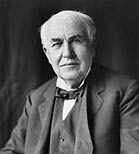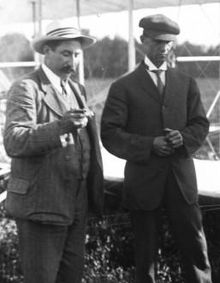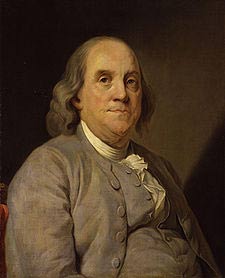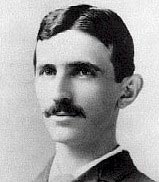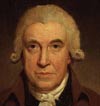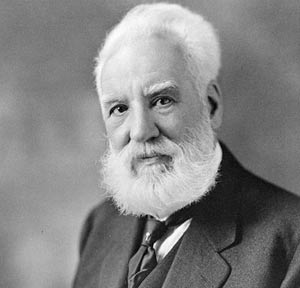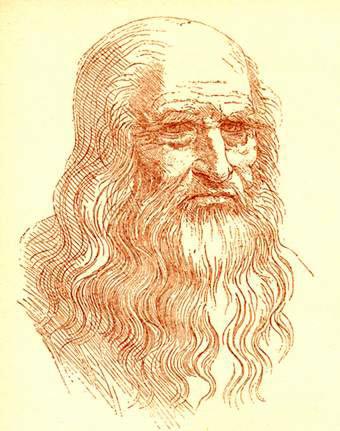From http://ideas.ted.com/how-the-zebra-got-its-stripes-with-alan-turing/
Like all the best scientific ideas, Turing’s theory was elegant and simple: any repeating natural pattern could be created by the interaction of two things — molecules, cells, whatever — with particular characteristics. Through a mathematical principle he called ‘reaction–diffusion’, these two components would spontaneously self-organise into spots, stripes, rings, swirls or dappled blobs.
In particular his attention focused on morphogens — the then-unknown molecules in developing organisms that control their growing shape and structure. The identities and interactions of these chemicals were, at the time, as enigmatic as the eponymous wartime code. Based on pioneering experiments on frog, fly and sea urchin embryos from the turn of the 20th century — involving painstakingly cutting and pasting tiny bits of tissue onto other tiny bits of tissue — biologists knew they had to be there. But they had no idea how they worked.
Although the nature of morphogens was a mystery, Turing believed he might have cracked their code. His paper ‘The chemical basis of morphogenesis’ appeared in the Philosophical Transactions of the Royal Society in August 1952.
Sadly, Turing didn’t live long enough to find out whether he was right. He took his own life in 1954, following a conviction for ‘gross indecency’ and subsequent chemical castration — the penalty for being openly gay in an intolerant time. In those two short years there was little to signpost the twists and turns that his patterns would take over the next 60 years, as biologists and mathematicians battled it out between the parallel worlds of embryology and computing.
The essence of a Turing system is that you have two components, both of which can spread through space (or at least behave as if they do). These could be anything from the ripples of sand on a dune to two chemicals moving through the sticky goop holding cells together in a developing embryo. The key thing is that whatever they are, the two things spread at different speeds, one faster than the other.
One component is to be auto-activating, meaning that it can turn on the machinery that makes more of itself. But this activator also produces the second component — an inhibitor that switches off the activator. Crucially, the inhibitor has to move at a faster pace than the activator through space.
The beauty of it is that Turing systems are completely self-contained, self-starting and self-organizing. According to professor Jeremy Green of King’s College London, all that one needs to get going is just a little bit of activator. The first thing it does is make more of itself. And what prevents it from ramping up forever? As soon as it gets to a certain level it switches on the inhibitor, which builds up to stop it.
“The way to think about it is that as the activator builds up it has a head start,” says Green. “So you end up with, say, a black stripe, but the inhibitor then builds up and spreads more quickly. At a certain point it catches up with the activator in space and stops it in its tracks. And that makes one stripe.”
From these simple components you can create a world of patterns. All you need to do is adjust the conditions, or ‘parameters’. Tweaking the rates of spreading and decay, or changing how good the activator is at turning itself on and how quickly the inhibitor shuts it down, subtly alters the pattern to create spots or stripes, swirls or splodges.
While studying elegantly striped marine angelfish, Japanese researcher Shigeru Kondo noticed that rather than their stripes getting bigger as the fish aged (as happens in mammals like zebras), they kept the same spacing but increased in number, branching to fill the space available. Computer models revealed that a Turing pattern could be the only explanation. Kondo went on to show that the stripes running along the length of a zebrafish can also be explained by Turing’s maths, in this case thanks to two different types of cells interacting with each other, rather than two molecules.
It turns out that the patterned coats of cats — from cheetahs and leopards to domestic tabbies — are the result of Turing mechanisms working to fill in the blank biological canvas of the skin. The distribution of hair follicles on our heads and the feathers on birds are also thanks to Turing-type self-organization.
Other researchers are focusing on how Turing’s mathematics can explain the way tubes within an embryo’s developing chest split over and over again to create delicate, branched lungs. Even the regular array of teeth in our jaws probably got there by Turing-esque patterning.
Meanwhile in London, Green has also found that the rugae on the roof of your mouth — the repeated ridges just above your front teeth that get burnt easily if you eat a too-hot slice of pizza — owe their existence to a Turing pattern.
As well as fish skins, feathers, fur, teeth, rugae and the bones in our hands, systems biologist James Sharpe thinks there are plenty of other parts of the body that might be created through self-organising Turing patterns, with positional information laid on top. For a start, while our digits are clearly stripes, the clustered bones of the wrist could be viewed as spots. These can easily be made with a few tweaks to a Turing equation’s parameters.
Sharpe has some more controversial ideas for where the mechanism might be at work — perhaps patterning the regular array of ribs and vertebrae running up our spine. He even suspects that the famous stripes in fruit fly embryos have more to do with Turing patterning than the rest of the developmental biology community might have expected.
Given that he works in a building clad in horizontal wooden bars, I ask if he’s started to see Turing patterns everywhere he looks. “I’ve been through that phase,” he laughs. “During the centenary year it really was Turing everywhere. The exciting possibility for me is that we’ve misunderstood a whole lot of systems and how easy it can be to trick ourselves — and the whole community — into making up Just So Stories that seem to fit and being happy with them.”
Slowly but surely, researchers are piecing together the role of Turing systems in creating biological structures. But until recently there was still one thing needed to prove that there’s a Turing pattern at work in the limb: the identities of the two components that drive it.
That mystery has now been solved by Sharpe and his team in a paper published in August 2014, in the journal Science. Five years in the making, it combines delicate embryo work with hardcore number crunching.
Sharpe figured that the components needed to fuel a Turing pattern in the limb must show a stripy pattern that reflects the very early developing fingers — either switched on in the future fingers and off in the cells destined to become the gaps, or vice versa.
To find them, graduate student Jelena Raspopovic collected cells from a developing mouse limb bud, in which only the merest hint of gene activity that leads to digit formation can be seen. After separating the two types of cells, and much painstaking molecular analysis, some interesting molecular suspects popped out. Using computer modelling, Sharpe was able to exactly recapitulate a gradual appearance of digits that mirrored what they saw in actual mouse paws, based on the activity patterns of these components.
Intriguingly, unlike the neat two-part system invoked by Turing, Sharpe thinks that three different molecules work together in the limb to make fingers. One is Sox9, a protein that tells cells to “make bones here” in the developing digits. The others are signals sent by two biological messenger systems: one called BMP (bone morphogenetic protein) signalling, which switches on Sox9 in the fingers, and another messenger molecule known as WNT (pronounced “wint”), which turns it off in the gaps between fingers.
Although classic Turing systems invoke just two components — an activator and an inhibitor — this situation is a little more complicated. “It doesn’t seem to boil down to literally just two things,” Sharpe explains. “Real biological networks are complex, and in our case we’ve boiled it down to two signalling pathways rather than two specific molecules.”
Further confirmation came when they went the other way — from the model to the embryo. Another of Sharpe’s students, Luciano Marcon, tweaked the program to see what would happen to the patterns if each signalling pathway was turned down. In the simulation, reducing BMP signalling led to a computer-generated paw with no fingers. Conversely, turning down WNT predicted a limb made entirely of digits fused together.
When tested in real life, using tiny clumps of limb bud tissue taken from early mouse embryos and grown in Petri dishes, these predictions came true. Treating the cultures with drugs that dampen down each pathway produced exactly what the program had predicted — no fingers, or all fingers. An alternative simulation with both signals turned down at the same time predicts two or three fat fingers instead of five neat digits. Again, using both drugs at once on real mouse limb buds created exactly the same pattern. Being able to flip from the model to the embryo and back again — making testable predictions that are borne out by experiments — is a key piece of proof that things are working in the way Sharpe thinks.
And if the theory is finally accepted, and we figure out how and where Turing systems are used to create structures in nature, what can we do with this knowledge? Quite a lot, according to Green.
“You can live without rugae but the things like your heart valves or your whole palate, they really matter,” he says. “The regenerative medics working on any stem cell technology or cell therapy in the future are going to need to understand how these are made. The growth factor research in the 1980s was the bedrock of the stem cell therapies that are starting to go into clinical trials now, but it inspired the whole world of regenerative medicine. That’s the kind of timescale we’re talking about.”
At Guy’s Hospital he sees close-up what happens when development goes awry. His department specializes in birth defects affecting the face and skull, and Green believes that understanding the underlying molecular nuts and bolts is the key to fixing them. “What we’re doing now is very theoretical, and we can fantasise about how it’s going to be useful, but in 25 years that’s the kind of knowledge we’ll need to have. It’ll probably be taken for granted by then, but we’ll need to know all this Turing stuff to be able to build a better body.”
In the last years of Alan Turing’s life he saw his mathematical dream — a programmable electronic computer — sputter into existence from a temperamental collection of wires and tubes. Back then it was capable of crunching a few numbers at a snail’s pace. Today, the smartphone in your pocket is packed with computing technology that would have blown his mind. It’s taken almost another lifetime to bring his biological vision into scientific reality, but it’s turning out to be more than a neat explanation and some fancy equations.

